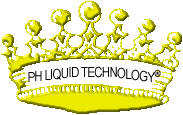PH Liquid Belgium Nv











Bufferglucose®
replacement for e-numbers
The global meat industry needs to be encouraged to produce healthier and safer products. PH Liquid Belgium Nv has therefore developed a type of buffer glucose: Bufferglucose Clean Label, which can replace most E numbers. Its development required many years of research, starting in 2006. This buffer glucose can be applied in all types of meat processing, in particular for fresh meat products, vacuum packaging, fresh minced meat, sausages, hamburgers, cooked ham, liverwurst, salami and all other preparations.
NATURAL
Bufferglucose Syrup is a concentrated and natural extract from fructose-glucose syrup and natural herb extracts ensuring a healthier product. Its application is simple, namely 1 to maximum 1.5 percent. The addition of Bufferglucose Syrup accelerates the coloration process of cured products as injected with nitrate or nitrite. Using Bufferglucose Syrup results in a production system with 20 to 30% less sodium chloride and 30 to 40% less nitrite in order to provide the consumer with a healthier finished product. Bufferglucose has strongly antioxidant properties and replaces E numbers such as ascorbic acid, ascorbate, erythorbate, sodium lactate, potassium lactate, tartaric acid, citric acid, citrate and acetate.
BENEFITS
Universal E number replacer for buffer systems and buffer films!
Secure prepared meat production systems.
BUFFERGLUCOSE CLEAN LABEL®
Replacement for e-numbers
Text Belgosuc Nv and PH Liquid Belgium Nv patent pending.
Bufferglucose Clean Label® for healthier and safer prepared meat production systems. Avoids outbreak and/or growth of following bacteria : E.coli, Salmonella, Listeria and Campylobacter and this by using healthy fresh muscle meat with the correct slaughter pH value of 5.6 – 5.8 after 24 hours slaughter time.
Analysis results of Bufferglucose Clean Label®
Challenge test, growth of Salmonella and Campylobacter in Bufferglucose Clean Label
Offer#: 1901123
Starting date: 11/03/2019
End date: 18/03/2019
Sample indentification:
Sample 1: Bufferglucose Clean Label
Sample discription: fructose-glucosesirope with natural aroma and natural plant extracts.
Strains: Salmonella enterica ATCC 13314
Campylobacter jejuni spp. Jejuni ATCC 33291
Analytical method: Salmonella quantification according to ISO 6597 modified
Campylobacter quantification according ISO 10272-2
Test setup:
Microorganisms were added to the pure Bufferglucose Clean Label product in a ratio of 1/10. The concentration of the microorganisms was determined after contamination and after a 4-day incubation at 42°C. Simultaneously a negative control using buffered penton water (BPW) was contaminated with the same concentration of microorganisms and incubated under the same conditions to determine difference in growth.
Results:
Blank: Salmonella and Campylobacter were not detected in the test product.
|
|
|
| Initial contamination in BPW (negative control) | 14.000.000 (log 7.15) cfu/ml |
| Initial contamination in Bufferglucose Clean Label | 67.000 (log 4.83) cfu/ml |
|
|
|
| Initial contamination in Bufferglucose Clean Label | 1.800.000 (log 6.26) cfu/ml |
|
|
|
| Initial contamination in BPW (negative control) | 1.200.000 (log 6,08) ufc/ml |
| Initial contamination in Bufferglucose Clean Label | <1 (log 0) cfu/ml |
|
|
|
| Initial contamination in Bufferglucose Clean Label | <1 (log 0) cfu/ml |
Conclusion:
- Directly after contact with the test product there was a strong reduction of Salmonella of 2.32 log. After 4 days of incubation at 42°C the growth of Salmonella was determined but limited to 0.89 log under the initial contamination level.
- Most probably there was a death of the Campylobacter strain directly after contact with the test product. Also after a microphilic incubation at 42°C there was no growth determined of Campylobacter.
- It needs to be taken into account that this test was performed under lab conditions.
Antwerpen, 20/03/19
Challenge test, growth of Listeria monocytogenes and Escherichia coli in Bufferglucose Clean Label
Offer#: 1901123
Starting date: 3/4/2019
End date: 10/4/2019
Sample indentification:
Sample 1: Bufferglucose Clean Label
Sample discription: fructose-glucosesirope with natural aroma and natural plant extracts.
Cepas: Listeria monocytogenes NCTC 11994
Escherichia coli NCTC 9001
Analytical method: Listeria spp. quantification according to ISO 11290-2 modified
Escherichia coli quantification according ISO 16649-2
Test setup:
Microorganisms were added to the pure Bufferglucose Clean Label product in a ratio of 1/10. The concentration of the microorganisms was determined after contamination and after a 4-day incubation at 42°C. Simultaneously a negative control using buffered penton water (BPW) was contaminated with the same concentration of microorganisms and incubated under the same conditions to determine difference in growth.
Results:
Blank: Listeria and E. coli were not detected in the test product.
|
|
|
| Initial contamination in BPW (negative control) | 18.000.000 (log 7.26) cfu/ml |
| Initial contamination in Bufferglucose Clean Label | 7.100 (log 3.85) cfu/ml |
|
|
|
| Initial contamination in Bufferglucose Clean Label | <1 (log 0) cfu/ml |
|
|
|
| Initial contamination in BPW (negative control) | 68.000.000 (log 7,83) ufc/ml |
| Initial contamination in Bufferglucose Clean Label | 720.000 (log 5.86) cfu/ml |
|
|
|
| Initial contamination in Bufferglucose Clean Label | <1 (log 0) cfu/ml |
Conclusion:
- Directly after contact with the test product there was a strong reduction of Listeria of 3.41 log. After 4 days of incubation at 42°C the growth of Listeria was not detected.
- Directly after contact with the test product there was a strong reduction of E. coli of 1.97 log. After 4 days of incubation at 42°C the growth of E. coli was not detected.
- It needs to be taken into account that this test was performed under lab conditions.
Antwerpen, 11/04/19